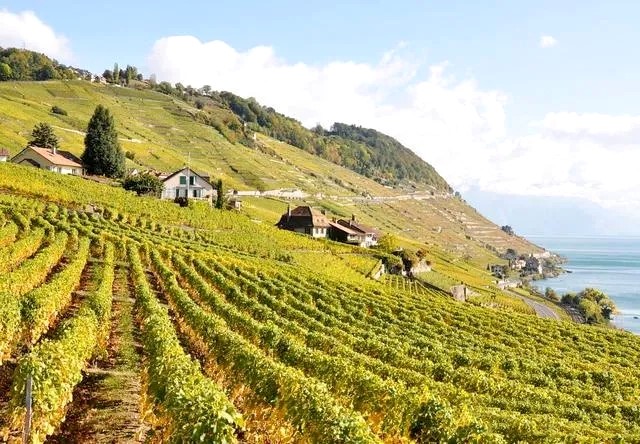After drinking too much “big wine” with deep color, full-bodied and full-bodied, sometimes we want to find a touch of coolness that can wash away the taste buds, so wines from cold regions come into play.
These wines are often high in acidity and refreshing. They may not give you a “sense of rebirth” like enlightenment, but they will definitely refresh you. This is a magic weapon for wines in cold regions that never go out of style.
Learn about these 10 coldest wine regions and you’ll discover more styles of wine.
1. Uwe Valley, Germany 13.8°C
The Ruwer Valley is located in the Mosel region of Germany. It is the coldest wine region in the world. Due to the lack of forest protection, the Ruwer Valley is colder than other parts of the Mosel.
The Uva River is about 40 kilometers long, and the slopes on both sides are distributed with “Moselle-style” narrow and steep vineyards. The gardens are covered with Devonian slate and ancient limestone, which give local wines a special flavor. Sense of structure.
Riesling is the main variety here, but there are also Miller-Tugau and the less popular variety Aibling. If you’re looking for a niche, boutique Riesling, the Riesling wines of the Uva Valley were once all the rage.
2. England 14.1℃
The British who love to drink wine have studied the tasting very thoroughly, but they are newcomers to wine making. The first commercial vineyard in modern England was not officially born in Hampshire until 1952.
The highest latitude in England is 51° north latitude, and the climate is very cold. Pinot Noir, Chardonnay, Blanche and Bacchus are planted with grape varieties for sparkling wine.
There has been a rumor that the British invented champagne. Although there is no way to verify it, the British sparkling wine is indeed extraordinary, and the high-quality wines are comparable to champagne.
3. Tasmania, Australia 14.4°C
Tasmania is one of the coolest wine regions on earth. However, it is an often overlooked producing area in the world wine kingdom, which may have something to do with its little-known geographical location.
Tasmania itself is a regional GI (Geographical Indication, geographical indication), but no production area on the island has been recognized by the industry before.
Tasmania became well-known to people in the wine industry because of its diverse terroir conditions. With the continuous improvement of wine production and quality in the region, Tasmania has gained more and more attention.
The land mainly grows Pinot Noir, Chardonnay and Sauvignon Blanc, which are used to brew sparkling wine and still wine. Among them, Pinot Noir wine is famous for its excellent freshness and long aftertaste.
The famous wine critic Jesse Robinson was surprised by two things when he visited this place in 2012. One was that there were only 1,500 hectares of vineyards in Tasmania; The cost of irrigation makes Tasmania’s wine prices slightly higher than other Australian regions.
4. French Champagne 14.7℃
Since Champagne is almost the northernmost vineyard in Europe, the climate is cold and it is difficult for the grapes to reach perfect ripeness, so the overall wine style is refreshing, high acid and low alcohol content. At the same time, it retains a delicate aroma.
The Champagne region is located in the northeast of Paris and is the northernmost vineyard in France. The three most famous producing areas in the Champagne region are the Marne Valley, the Reims Mountains and the Côtes de Blancs. There are two communities in the south, Sezanne and Aube, but they are not as famous as the first three.
Among them, Chardonnay is the most widely planted in the Côte Blanc and Côte de Sezana, and the style of the finished wine is exquisite and fruity. The latter is round and ripe, while the Marne Valley is mainly planted with Pinot Meunier, which can add body and fruit to the blend.
5. Krems Valley, Austria 14.7°C
The Kremstal is located in a forest area and has a cold climate influenced by cool and humid north winds. This valley with 2,368 hectares of vineyards is divided into 3 different regions: the Krems valley with rocky soil and the old town of Krems, the city of Stein in the west of the Wachau production area, and the small town along the south bank of the Danube. wine village.
Grüner Veltliner, the main variety in the Krems Valley, grows well on fertile loess terraces and steep hillsides. Many famous origins produce a variety of unique styles of wine. Noble Riesling, the second largest variety in DAC in the Krems Valley, represents different tastes from different regions.
Grüner Veltliner is vibrant, spicy, yet elegant and delicate; Riesling is mineral-laden and refreshing.
Post time: Mar-17-2023

